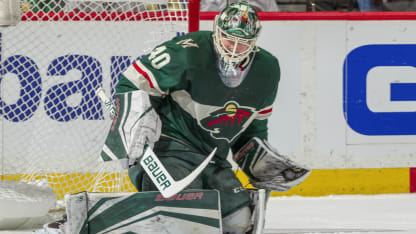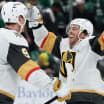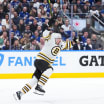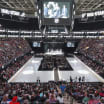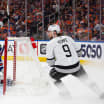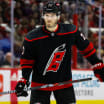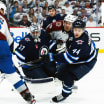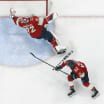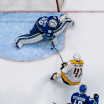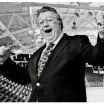The technique to best achieve that comfort level varies by goaltender.
Dubnyk relies primarily on the original VH technique, which became popular in the mid-2000s and places the short-side pad horizontally against the post and the back pad vertically along the ice. That's, in part, because he isn't flexible enough for the newer Reverse-VH, which has the lead pad on the ice against the post and the back pad off the ice to either drive a seal into the post or use as a rudder for pushes around and off the post.
"I can push into it as a save, no problem, but as far as setting up in it, I know if that guy doesn't shoot the puck at me and that puck goes somewhere else, I think we're talking about a handful of guys flexible enough to properly execute movement out of that," Dubnyk said, adding with a laugh, "I'm just an old man that wants to stand on my feet."
Florida Panthers veteran Roberto Luongo is the NHL's oldest goalie at 38 but said a switch from VH to Reverse-VH in 2012-13 was one of the most important changes he's made.
"For me, it's amazing," said Luongo, who struggled to keep his back pad above the goal line in the original VH. "There is so much more control when you are in the Reverse."
There are other examples of goalies who adopted Reverse-VH, which originated in Sweden, after Jonathan Quick won the Stanley Cup for the Los Angeles Kings using it in 2012.
It was a big part of Marc-Andre Fleury's resurgence with Pittsburgh Penguins goalie coach Mike Bales in 2013, allowing him to be comfortable on his posts and reducing bad goals from chasing plays outside them.
"The Reverse-VH has been good for me," said Fleury, now with the Vegas Golden Knights. "A game-changer."
